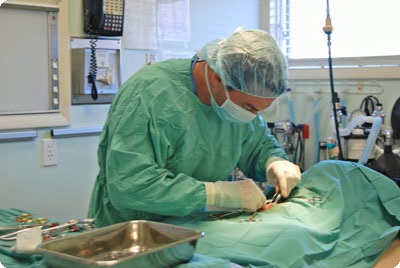
Our experienced veterinarians perform many types of surgeries for animals, ranging from minor procedures to more intensive surgeries. With all surgeries, our focus is on safety and pain management during recovery to ensure your pet is as comfortable and pain free as possible. We recommend that you always schedule a preliminary physical exam to make sure your pet is healthy enough to consider anesthesia. This will also allow you to also meet our doctors , medical team and get all your questions answered.
We carefully monitor your pet’s blood pressure, temperature, heart rate, heart rhythm, respiratory rate, oxygenation levels, and carbon dioxide levels throughout every surgery. All of our surgery’s include preoperative blood work, IV catheters and IV fluids,and anesthesia monitoring. Surgeries are offered every day of the week for your convenience , so you can be there with your pet upon recovery.
TYPES OF SURGERIES
Some of the procedures our veterinarians can perform include but are not limited to
- Anal sac removals
- Biopsies
- Bladder stone removal
- Cesarean sections
- Ear hematoma
- Exploratory surgery
- Foreign body removal
- Gastropexy
- Mass removal
- Oral surgery
- Neuter
- Pyometra
- Soft Tissue Surgery
- Spay
- Stomach and intestinal surgery
- Tail docking
- Tumor removal
- Wound/Laceration repair
GENERAL ANESTHESIA & PATIENT MONITORING
For some procedures, your pet will need to be administered general anesthesia so that he or she will be unconscious and not feel pain. Many pet owners worry about their pets being administered general anesthesia. We can assure you that modern anesthesia is generally quite safe; to further lower any risk, we perform a physical examination and run blood work ahead of time to catch any underlying health issues. In addition, we follow a specific anesthetic protocol, including monitoring vital signs during the procedure, to ensure the safety of our patients.
We begin most general anesthetic procedures by administering a sedative to help the pet relax and decrease any anxiety and pain. We then administer an intravenous drug to provide complete anesthesia and place a breathing tube into the patient’s trachea (windpipe). To maintain the state of unconsciousness, we deliver a gas anesthetic in combination with oxygen through the breathing tube.
Please contact us if you have any questions or concerns about your pet receiving general anesthesia or about the procedure for which your pet is scheduled.
